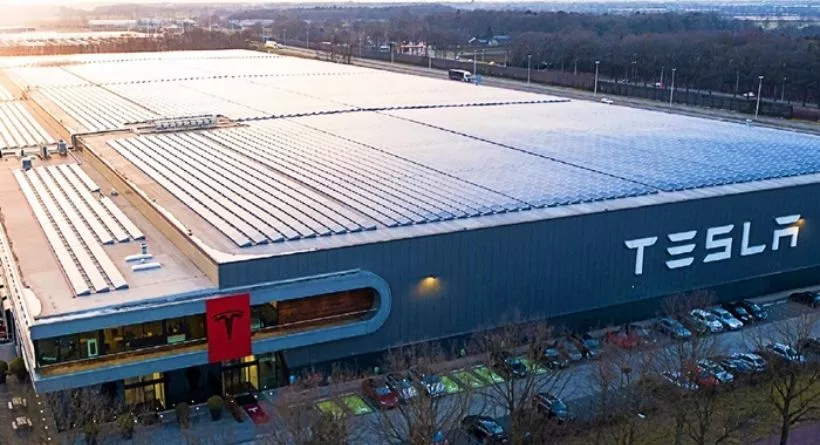Are you familiar with the current wave of excitement among political leaders who have been inviting Elon Musk to establish Tesla plants in their states? Indeed, the prospect of a local Tesla factory is a compelling solution for many economic and environmental challenges communities face today.
But let’s be honest, this issue is not without its complications. From local regulations to infrastructural requirements, there are various hurdles that need to be navigated. But worry not. This blog post aims to demystify the complexities and shed light on potential solutions for these challenges.
We’ll delve deep into why these political leaders are so eager to invite Elon Musk, explore the potential benefits, and address some of the common concerns surrounding such a large-scale endeavor. Our aim is to equip you with a comprehensive understanding of this contemporary issue, and we believe, together, we can navigate these complexities.
Why Tesla? The Economic and Environmental Significance
Let’s first understand why political leaders have invited Elon Musk to set up a Tesla plant in their states. This decision isn’t whimsical. It’s backed by the potential benefits a Tesla plant can bring. And these benefits go beyond the boundaries of a state, impacting both the economy and the environment.
Tesla, under Elon Musk’s leadership, has shown remarkable innovation. Their electric cars are seen as game-changers. Having a Tesla plant in a state means creating more job opportunities, boosting local economy, and pushing towards green technology. It’s like hitting three birds with one stone.
For instance, consider Tesla’s Gigafactory in Nevada. It provided 7,000 jobs and boosted the local economy. Similarly, inviting Tesla to their states, political leaders aim to replicate this success.
Moreover, these leaders are also conscious of the environment. The traditional auto industry is a significant contributor to global emissions. Tesla’s electric vehicles (EVs) offer an alternative that’s both appealing and sustainable. It’s a win for the environment and the economy.
The Potential Challenges

However, this path is not devoid of hurdles. Inviting a tech titan like Tesla comes with its own set of challenges. From stringent regulations to infrastructural needs, these challenges require strategic navigation.
Regulatory challenges top the list. As Tesla’s autopilot feature comes into play, how would the local laws adapt to it? Consider California, where they had to modify laws to accommodate self-driving cars. So, political leaders need to keep such scenarios in mind while extending the invitation.
Next comes the infrastructural needs. A Tesla factory isn’t just another car plant. It’s a high-tech facility requiring an advanced infrastructure, such as strong electrical grid and transportation facilities. For instance, when Tesla decided to build a Gigafactory in Shanghai, they had to ensure the location had all necessary amenities.
But these challenges aren’t insurmountable. They require smart strategies and an adaptable attitude. And political leaders, by inviting Elon Musk to set up a Tesla plant in their states, show their readiness to embrace the future. After all, every significant change comes with its share of challenges. The key lies in transforming these challenges into opportunities.
The Road Ahead: Solutions and Strategies
With the challenges identified, what’s the way forward? It’s evident that the potential benefits of having a Tesla plant far outweigh the problems. So how can political leaders who have invited Elon Musk to set up a Tesla plant in their states navigate these challenges?
The first step is creating a regulatory environment that’s conducive to technological innovation. Laws should evolve with technology. Consider how Europe has adapted regulations to accommodate electric vehicles. Political leaders can learn from such examples.
Infrastructure is the second piece of the puzzle. The state should invest in creating the required infrastructure. It’s akin to preparing the soil before sowing seeds. Remember, a well-prepared ground ensures healthy growth.
Moreover, fostering a collaborative relationship with Tesla could lead to shared problem-solving. This collaboration can extend to infrastructural planning, regulatory compliance, and more. Remember, inviting Elon Musk to set up a Tesla plant isn’t just about bringing in jobs and technology. It’s about creating a partnership that benefits all stakeholders.
Case Studies
Looking at states that have successfully invited Tesla or similar corporations can provide valuable insights. Nevada, for example, managed to draw Tesla’s Gigafactory to its land. The state offered tax incentives and also worked on improving infrastructure.
Shanghai, too, managed to invite Tesla by offering attractive policies. The city swiftly prepared an 86-acre site for the Gigafactory. Both these cases underline the importance of creating a business-friendly environment while addressing infrastructure and regulatory challenges.
By learning from these case studies, political leaders inviting Elon Musk to set up a Tesla plant in their states can formulate effective strategies. They will not only draw the company into their territory but also ensure that the arrangement benefits the state, the economy, the environment, and the citizens. Now, that’s what we call a win-win situation.
Conclusion
To wrap up, political leaders have invited Elon Musk to set up a Tesla plant in their states for reasons that resonate with both economic prosperity and environmental sustainability. The allure of job creation, the economic boost, and the significant leap towards green technology make this move promising.
However, as with any significant venture, challenges lie ahead. Regulatory adaptations and infrastructural upgrades may pose hurdles, but they are not insurmountable. The path forward involves keen strategizing, active collaboration with Tesla, and creating a conducive, business-friendly environment.
Looking at the success stories from places like Nevada and Shanghai provides us with practical lessons and inspiration. As we’ve discussed, inviting Tesla into a state is not merely about drawing in a prestigious brand. It’s about forging a partnership that benefits the state, the people, and the environment.
Your understanding of this issue is a step towards a more informed dialogue around it. Together, we can look forward to a future where technology and sustainability drive our economy and preserve our environment.

